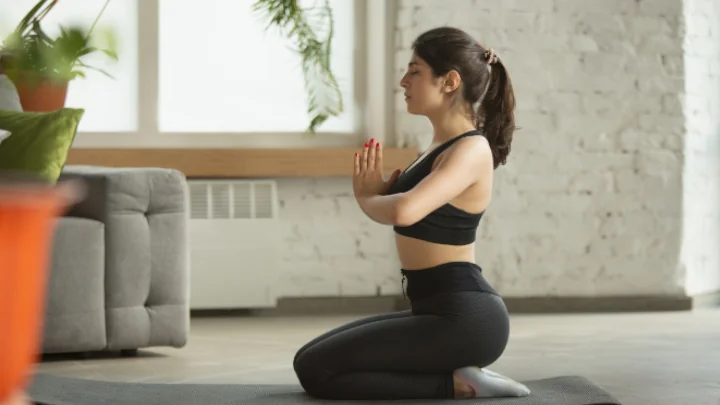How to Create a Healthy Home Environment

Creating a healthy home environment is so important for our well-being. Our homes should be places where we feel safe, nurtured, and inspired to live life to the fullest.
In this fast-paced world it can be difficult to create an atmosphere that promotes physical and mental health but taking small steps like improving air quality or setting up daily routines can make huge differences in how we feel on a day-to-day basis.
In this article, we will look at how to create a healthy home environment for transforming your home into a haven of peace that not only promotes your physical health but also improves your emotional and psychological well-being.
How to Create a Healthy Home Environment
Here are some tips to help you create a healthy home space that you can enjoy and relax in.
1. Set a Cleaning Schedule
At the end of a busy day, the thought of cleaning is enough to fill you with dread. However, to keep your family healthy, getting rid of germs and keeping the hygiene standards up is essential.
Not every job and room needs to be cleaned daily – some are weekly and even monthly. By dividing jobs up into their regularities, you can visualise the importance of each task.
To help, try and keep cleaning products in baskets according to how often you need them to clean. This makes it easier to grab them and get the jobs done before you relax.
A great way to ensure everyone in the house is pulling their weight is by creating a cleaning schedule that clearly outlines everyone’s tasks and when they should be completed.
To make sure nobody is saddled with the ‘worst’ or ‘best’ chores every time, make sure you occasionally swap tasks around to make it fair.
If you’ve got children or young adults at home, it’s worthwhile walking them through the task and demonstrating it to them in full so that they understand the level to which the task needs to be completed.
This will also help make sure that other people aren’t left to pick up any slack and create a consistent level of cleanliness around the home.
2. Conscious Product Choices
The market for eco-friendly products has boomed over the past few years, and so there are plenty of alternatives to the ones you would typically buy. Certain health conditions, such as asthma and eczema, may be exacerbated by household cleaners.
A lot of home cleaning can be done with vinegar, baking soda and soap, so before stocking up at the shops, see if they can help do the job. Remember to keep any cleaning products and chemicals safely stored away so that children and pets cannot get to them.
On top of looking for less harsh chemicals, it’s also worthwhile considering if your cleaning products are cruelty-free as this reduces the harm to the environment and animals throughout the creation of the products.
Along with the ingredients, it’s essential to consider the packaging that your cleaning products come in. You may be able to reduce your plastic consumption by opting for refill packets rather than new spray bottles or tubs.
If refills aren’t an option, then try to look for products in packaging that are made from recycled materials or ones that you can reuse, repurpose or recycle after you’ve finished with them.
3. Improve your Organization
A clutter-free home can create a calm and peaceful environment and, in turn, a calm and relaxed mind. Walking into a clean and tidy home at the end of the day can help you unwind and switch off. This can be hard to do, however, if your home has limited storage space.
Before you begin assessing how much extra storage you need, it’s always worth going through your belongings and seeing if there are any items that you could donate or sell to help free up some extra room and make a little extra cash on the side.
Tackle this job room by room to avoid getting overwhelmed and creating more clutter than you started with.
Certain rooms may be more problematic than others, especially if they are of an unusual shape or size. Getting bespoke wardrobes fitted in your bedroom, for example, can help to keep things nice and tidy and help you relax at night.
If you’re unsure where to add storage as you’ve got limited space, there are plenty of alternatives that can make the most of whatever square footage you’re working with.
Swap free-standing bookshelves out for floating shelves for décor or family photos, and an ottoman more than makes up for the floor space it takes up with its dual purpose of additional storage and seating.
Vacuum storage can be an invaluable asset if you’re looking to store clothing or childhood soft toys, as it drastically reduces the space they take up and makes them far easier to keep away.
4. Add Greenery
Plants have many benefits in the home. From a décor standpoint, they are perfect for adding a bit of texture and colour to a room, which can lead to you feeling more comfortable at home. Having spaces you love can have an impact on your whole family.
Foliage is also great for purifying the air in your house. Through their natural photosynthesis process, plants take in carbon dioxide and turn it into oxygen.
This means that the air in your home will be of a better quality. Better air quality will benefit everyone in the house, especially if you live in a city with lots of pollutants. As the air quality is better, your lungs will be healthier.
Suppose you’re not green-fingered and worry about the responsibility of looking after your plants. In that case, it’s good to note that whilst they don’t offer the air filtration properties of their live counterparts, artificial plants still offer excellent mental health and well-being benefits.
5. Get Plenty of fresh air
Open up windows often during nice weather (or use an electric fan when necessary) so you get plenty of fresh oxygen circulating through your house instead stale indoor air filled with pollutants from everyday activities like cooking food etc.
This will help improve overall health by reducing stress levels while at the same time boosting energy levels due its invigorating effects on us humans.
Conclusion
In conclusion, keeping your family and home healthy doesn’t have to cost the earth and doesn’t require a significant life change. By following the above steps, you can start to create a healthy home environment that benefits all your family members in a way they’re sure to notice.
References
- Designing Sustainable and healthy homes
- The psychology of home environments
- Improving the home learning environment





